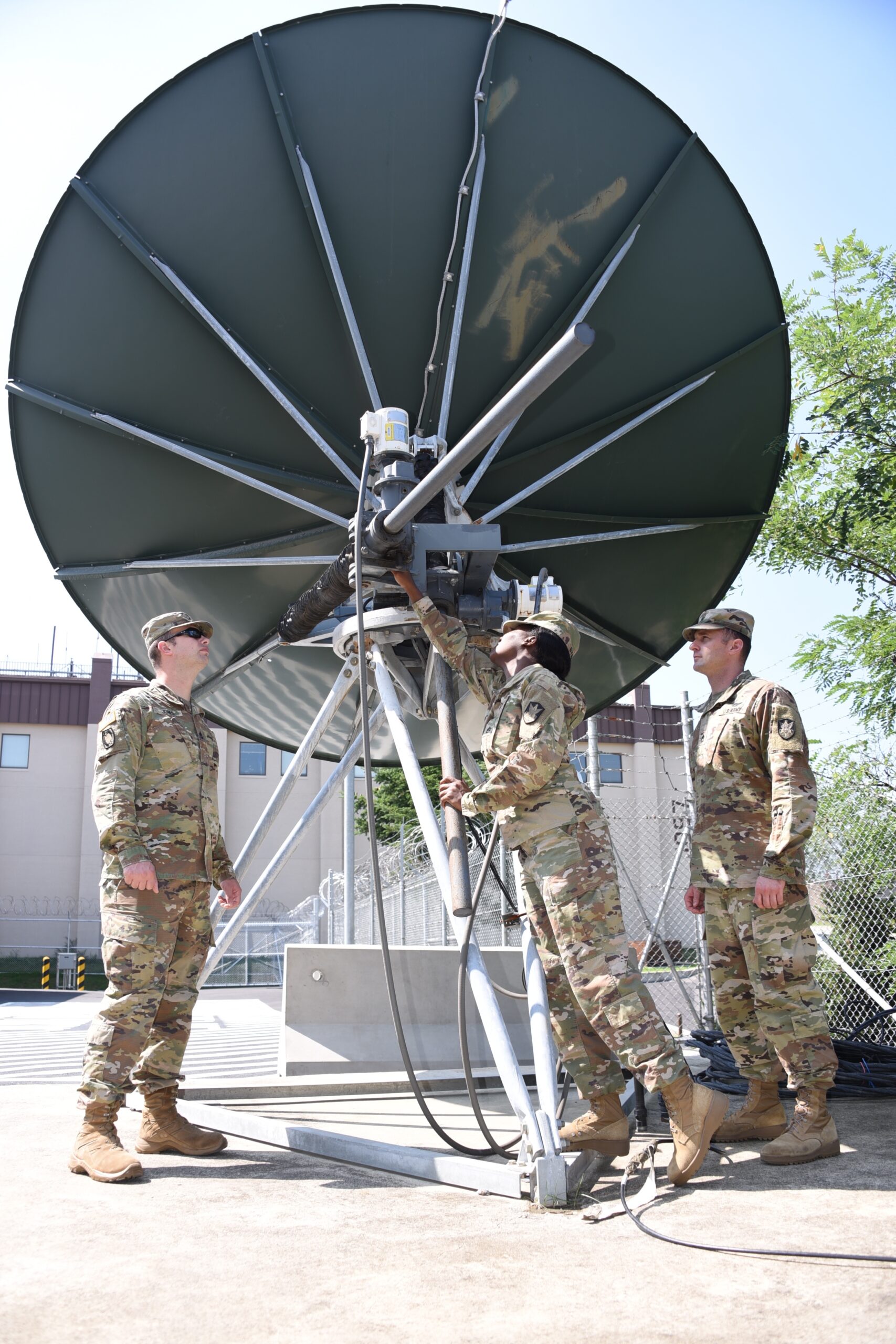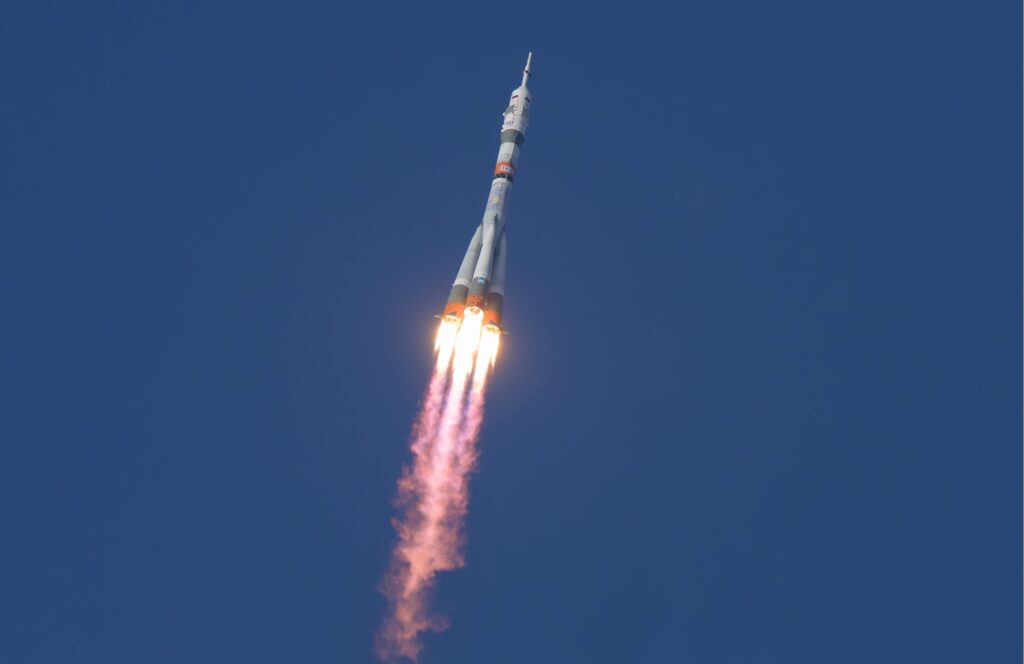Now Reading: Space is key to the Army’s long march to a connected force
-
01
Space is key to the Army’s long march to a connected force
Space is key to the Army’s long march to a connected force


For decades, the U.S. Army has been chasing the same mirage: a fully connected battlefield where every soldier, vehicle and sensor shares data seamlessly. Each time, the promise has been the same — a “data-centric” force that can see, decide and act faster than any adversary. Each time, the results have been disappointment, delay and billions of dollars down the drain.
From the Joint Tactical Radio System to the Warfighter Information Network–Tactical (WIN-T) and Future Combat Systems, the Army’s record on digital modernization is littered with cautionary tales. JTRS collapsed under its own ambition, trying to pack too many capabilities into a single radio that became too big, too complex and ultimately unreliable. WIN-T promised a battlefield internet but delivered a fragile, sluggish network. Future Combat Systems, envisioned as a fully networked Army of the future, became one of the most expensive failures in Pentagon history.
Now the Army is trying again, under a new banner: Next Generation Command and Control (NGC2). This time, it’s borrowing playbooks from the commercial tech world. Instead of the closed, bespoke systems that have defined Pentagon programs for decades, NGC2 is being built around an open architecture — a modular tech stack of software, data infrastructure and resilient communications. The Army wants to plug in innovations from the commercial world: cloud computing, artificial intelligence and, increasingly, space-based connectivity.
The theory is simple: private-sector speed can outpace bureaucratic drag.
The execution, however, will be anything but.
Anduril Industries — a company born out of the tech startup world rather than the defense-industrial complex — is leading the effort, with a nearly $100 million contract to prototype an NGC2 architecture for an infantry division. Its team includes Palantir and Microsoft. Lockheed Martin and L3Harris are also onboard with smaller prototyping contracts. For now, these efforts are running in parallel — a deliberate strategy to test multiple approaches and drive competition.
That’s also a shift. Defense acquisitions have been dominated by single-vendor programs where requirements froze years before fielding. By the time systems reached soldiers, the technology was outdated. NGC2, at least on paper, embraces a different model of continuous prototyping — more like a Silicon Valley software ecosystem than a Cold War weapons program.
The space industry’s role
This approach brings the space industry into the Army’s digital transformation as satellite networks are central to modern command and control, said Craig Miller, head of Viasat’s government business.
The Army’s vision is to fuse data streams from every domain — land, air, sea and space — into a single operational picture, he said. That requires resilient satellite communications, persistent imagery and edge computing close to the fight.
Commercial operators are lining up to participate. Kymeta recently won a contract to supply flat-panel satellite terminals for NGC2 for mobile connectivity. Tom Jackson, executive vice president of Kymeta, said the Army “wants to compress a program that could go out five to seven years into two and a half years.” He notes that the Army is seeking tools that let commanders tap whichever network — terrestrial or in space — that offers the best balance of bandwidth, latency and security at a given moment.
It’s not hard to understand why the Army is moving in this direction. Warfare has become a contest of networks as much as of weapons. Precision fires, autonomous systems and AI-driven analytics all rely on fast, secure data exchange. The side that can connect sensors to shooters faster wins.
The military has broadly adopted commercial satellite communications but NGC2 represents something bigger — essentially a redesign of the Army’s enterprise communications backbone. If it works, it could become the template for how the Pentagon modernizes across the services.
It would also mean a more prominent role for space.
At the same time, there’s a strategic logic at play. As geopolitical competition intensifies, the U.S. military’s edge depends less on the number of platforms it fields and more on how effectively it connects them. China’s People’s Liberation Army has already moved beyond the era of “informationized warfare” to what it calls “intelligentized warfare” — a doctrine built around AI-driven command systems and autonomous platforms. The U.S. can’t afford another decade of failed experiments.
For the Army, success this time won’t mean fielding a flawless system. It will mean building one that can evolve — fast enough to survive the next war, not the last.
This article first appeared in the November 2025 issue of SpaceNews Magazine with the title “Building a system that lasts.”
Stay Informed With the Latest & Most Important News
Previous Post
Next Post
-
 012024 in Review: Highlights from NASA in Silicon Valley
012024 in Review: Highlights from NASA in Silicon Valley -
 02Panasonic Leica Summilux DG 15mm f/1.7 ASPH review
02Panasonic Leica Summilux DG 15mm f/1.7 ASPH review -
 03How New NASA, India Earth Satellite NISAR Will See Earth
03How New NASA, India Earth Satellite NISAR Will See Earth -
 04And Thus Begins A New Year For Life On Earth
04And Thus Begins A New Year For Life On Earth -
 05Astronomy Activation Ambassadors: A New Era
05Astronomy Activation Ambassadors: A New Era -
06SpaceX launch surge helps set new global launch record in 2024
-
 07Space Force plans new ‘Futures Command’ amid pressure to speed up modernization
07Space Force plans new ‘Futures Command’ amid pressure to speed up modernization



















